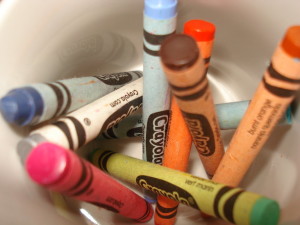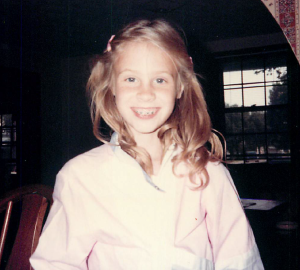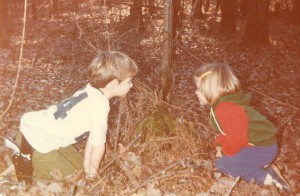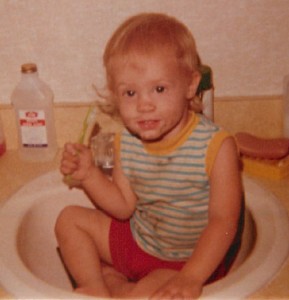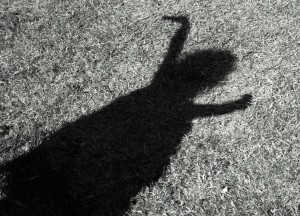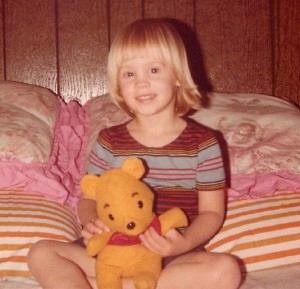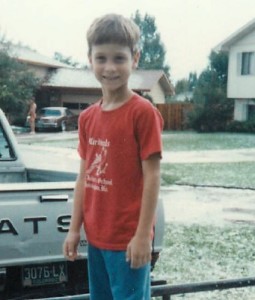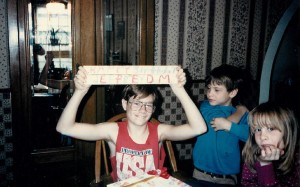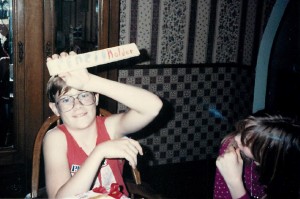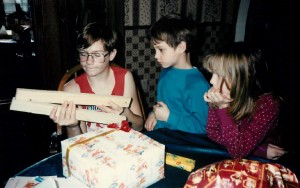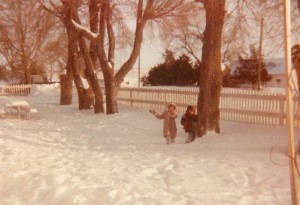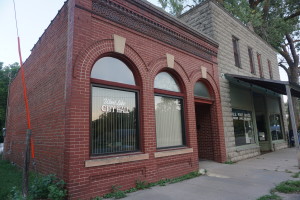 “Jessica!?…Jessica!” My heart was beating faster and I took deep breaths to try and slow it, while pushing myself deeper into the corner of my closet. The bedroom door opened and I heard my mom say my name again, a tone of annoyance sounding in her voice. “I know you’re in here” she says. I hear the covers on my bed rustle, then the squeak of the closet as the door slides open. “Get out of there and get outside. There’s too much work to do in the yard for you to be in here, doing what? Reading?” I look up at her, a nervous smile on my face and clutching a book to my chest. My still pounding heart falls as I know that Trixie Belden will have to wait.
“Jessica!?…Jessica!” My heart was beating faster and I took deep breaths to try and slow it, while pushing myself deeper into the corner of my closet. The bedroom door opened and I heard my mom say my name again, a tone of annoyance sounding in her voice. “I know you’re in here” she says. I hear the covers on my bed rustle, then the squeak of the closet as the door slides open. “Get out of there and get outside. There’s too much work to do in the yard for you to be in here, doing what? Reading?” I look up at her, a nervous smile on my face and clutching a book to my chest. My still pounding heart falls as I know that Trixie Belden will have to wait.
I knew better than to try and get out of chores, but reading was so addicting that I felt almost pained when I had to put a book down and rejoin the outside world. Interestingly, the book had been my mother’s, as were most of my books at that time in my tween years. Nancy Drew, Trixie Belden, Anne of Green Gables…they were the gateway. Before them books were purely recreational.
A couple of summers later I spent with my grandparents, in Nebraska, furthered my thirst for books and stories. One afternoon I was walking down to the Post Office to get the mail. Actually, I was meandering and taking my time because I didn’t want to help hang the laundry. Before I got to the Post Office I stepped into the doorway of the old library (now City Hall, pictured above). It hadn’t been in use for years, but the shelves were lined with books and I just knew something special was in there. Later that day as we were making dinner I mentioned the library to my Grandma, a very practical woman. She gave me a brief history of it and stated that she had a key to the building. Have you ever seen fireworks explode in a 14 year old? I asked if I could go inside. She didn’t understand why and listed all the practical reasons against entering: it was old, dusty, not in use for years, had no modern books, etc… I didn’t understand how this treasure was so close and yet so far away. For the next few days I brought the subject up several times, beginning casually and ending (I’m sure) in pleading and begging. Finally Grandma relented. She took the key out and off we went. When she opened the door the silence was almost overwhelming. I stepped in and slowly surveyed the room, my fingers itching to open a book. The smell was heavenly- old paste and paper. I reached for a book and was brought out of my real-life daydream by Grandma telling me not to mess anything up, and that it was time to go. We had just gotten there and I felt my heart ache with longing.
I have always enjoyed books and stories whether I was reading them myself, or being read to. Do you have a favorite book or story from childhood?

